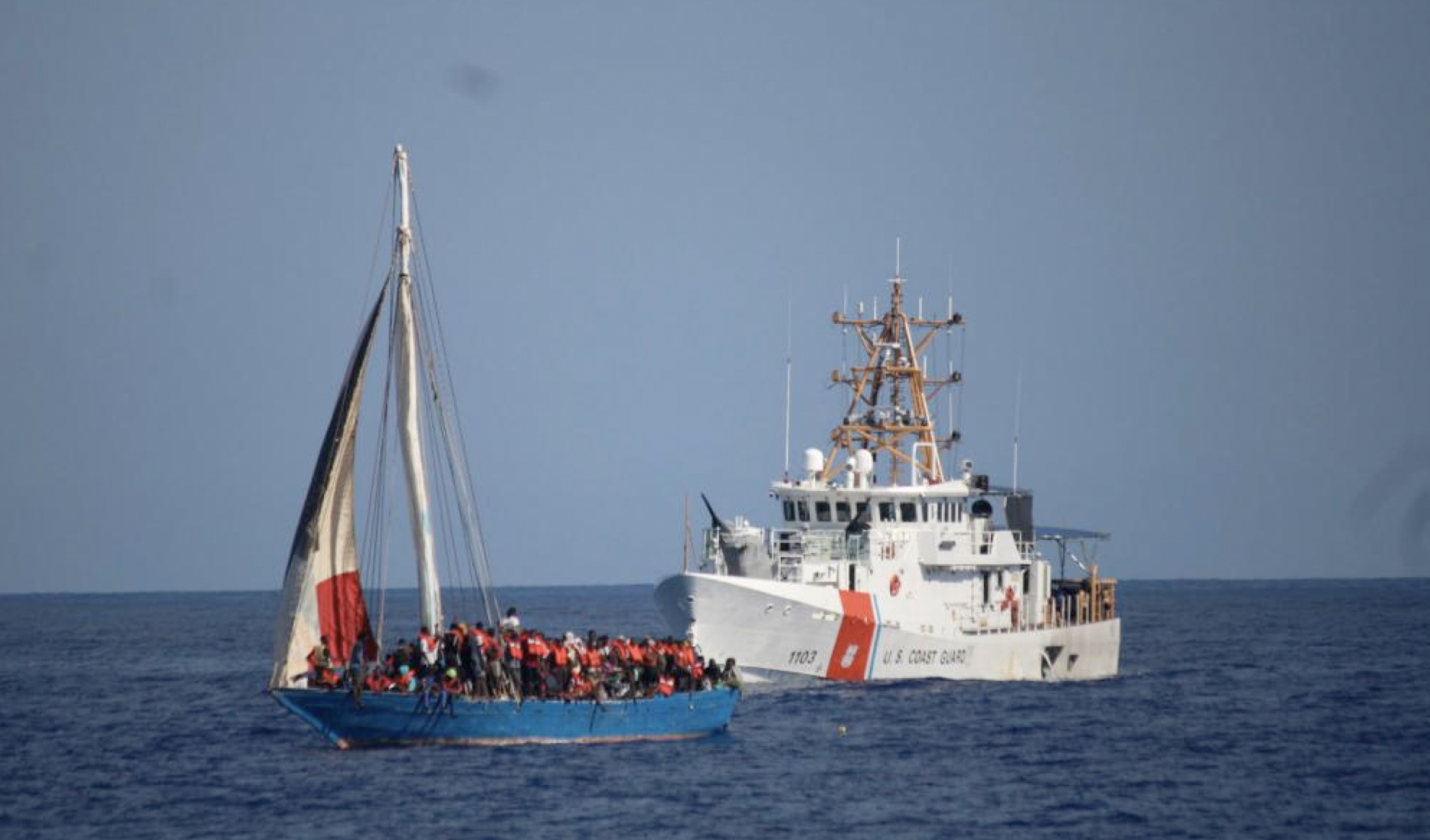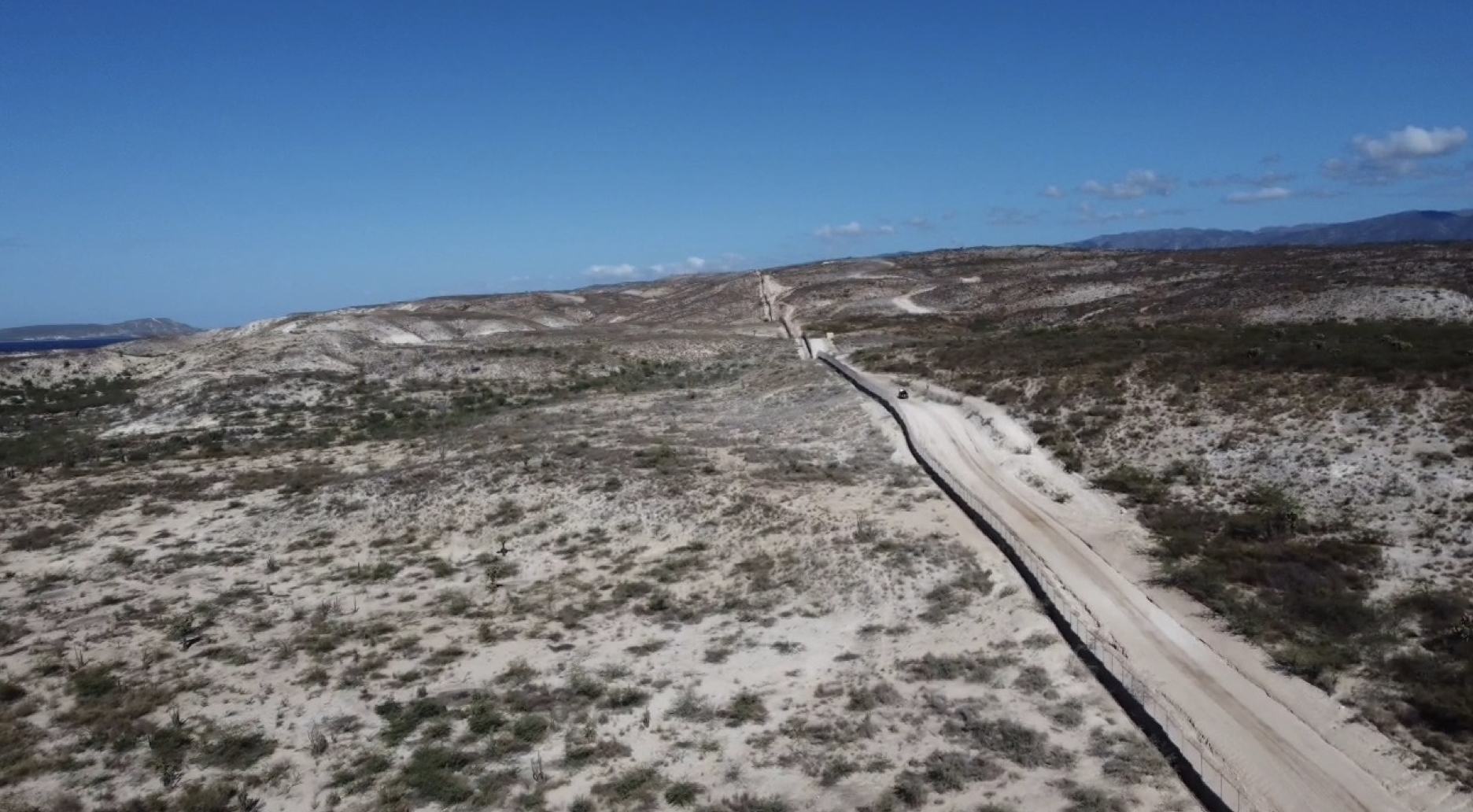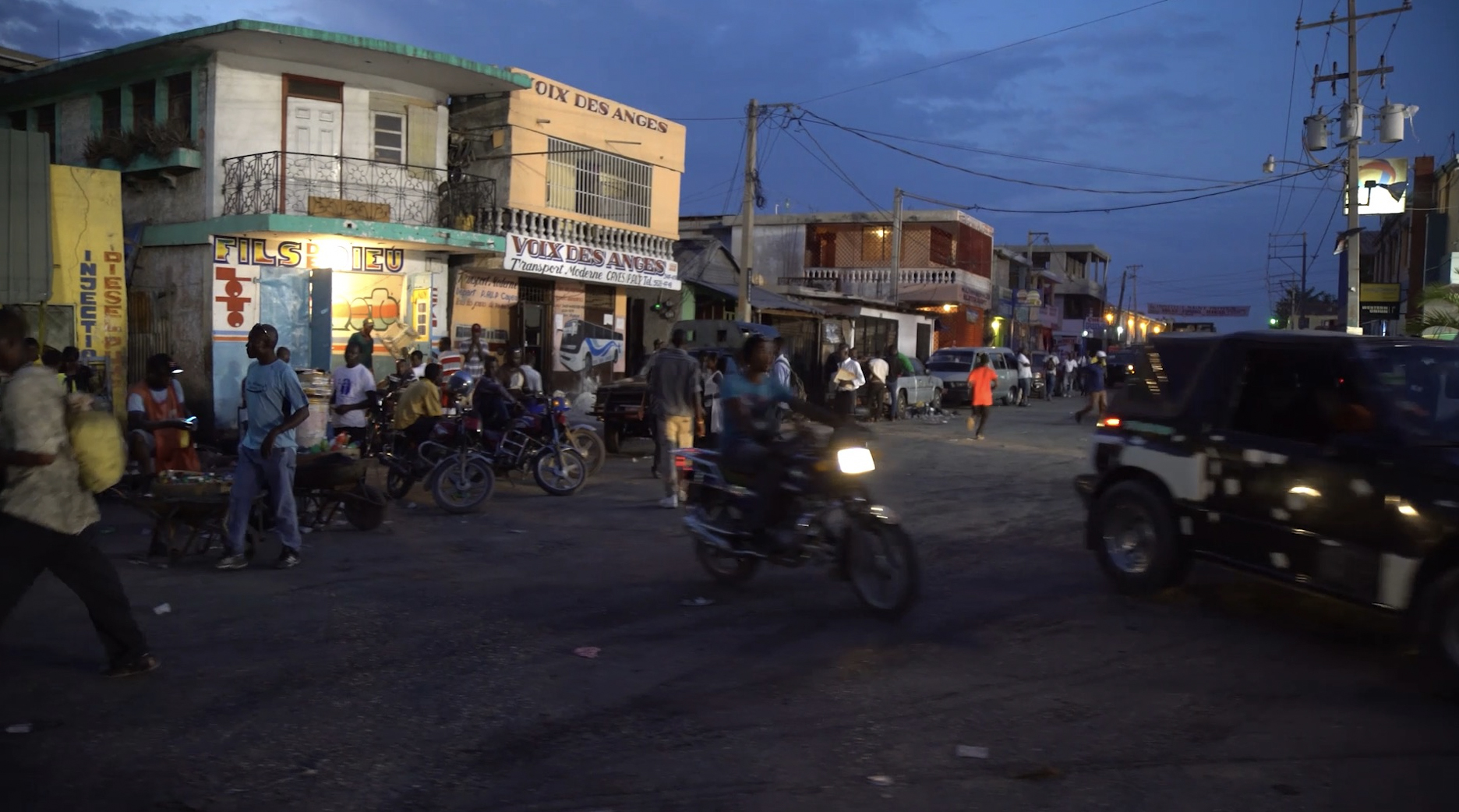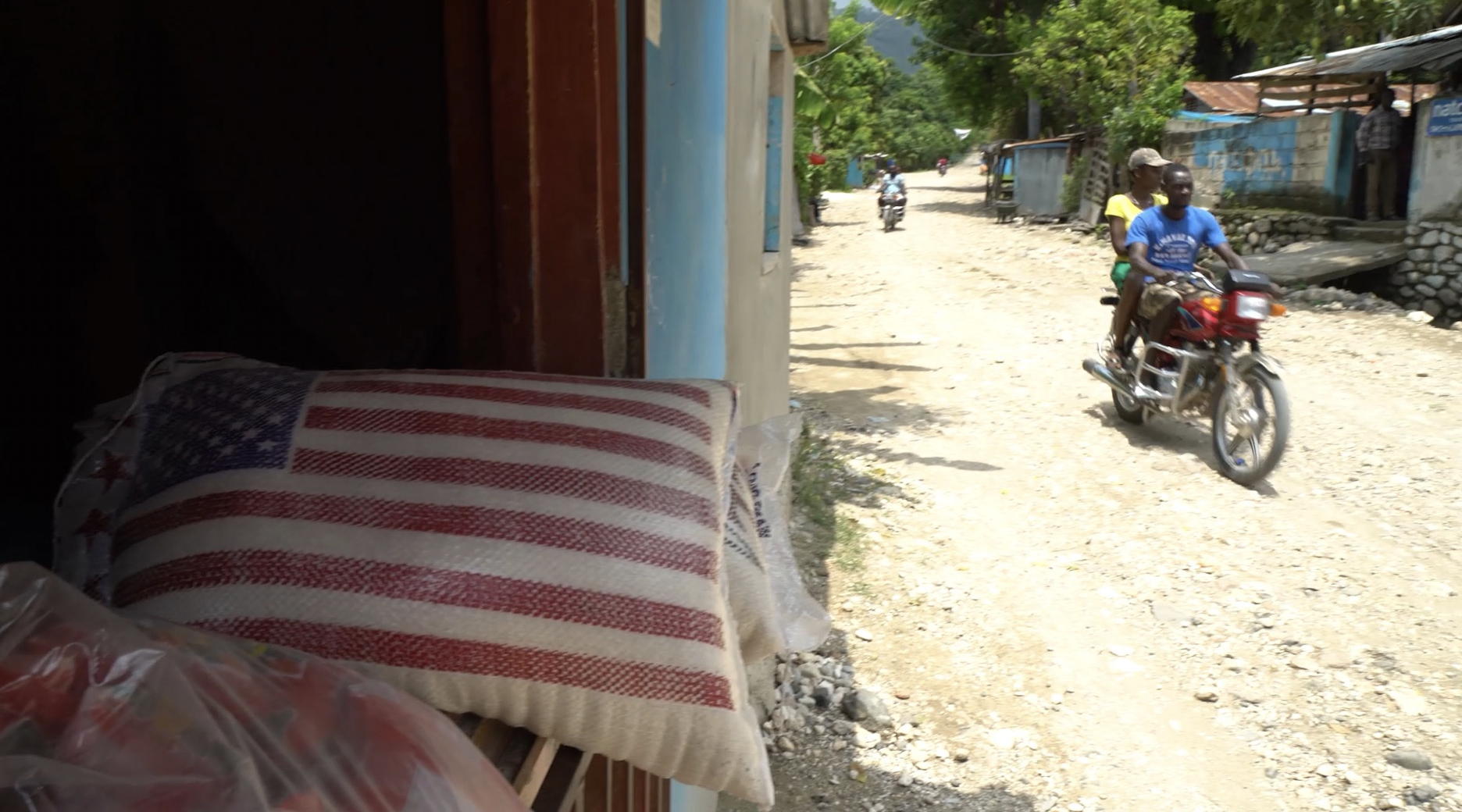Chuck Holton has spent two decades reporting on wars and disasters in more than 100 countries. He has 10 books in print and lives in Panama.
A spike in the number of Haitian migrants has been seen as hundreds are arriving in the Florida Keys each week, making the perilous, 600-mile crossing on insanely overcrowded boats and further straining the ability of the U.S. Coast Guard to do its real job — interdicting drug traffickers in the Caribbean.

|
Just one such example: In January, the Coast Guard intercepted a 50-foot sailboat carrying nearly 400 Haitian migrants not far from the remote Cay Sal Bank, an island located midway between Florida and Cuba. The Haitians were trying to reach Key West.
The Coast Guard captured more than 7,000 Haitians in 2022, as opposed to 1,500 in 2021. That’s still just a fraction of the more than 60,000 Haitians who walked across the U.S. Southern border last year. This begs the question: Why are so many Haitians coming by sea?

|
The Dominican “Trump Wall”
The answer may be found on Haiti’s dusty border crossing with the Dominican Republic (DR). The crossing closest to Port-au-Prince is at Jimani, a remote mountain frontier bounded on one side by soaring mountain cliffs and the Caribbean’s largest lake on the other. On the narrow spit of land in between, throngs of Haitians crowd the dusty street, women carrying baskets on their heads with all manner of goods and men pushing wheelbarrows and pulling suitcases. Some only come here to trade whatever meager goods they have for enough money to eat — there’s a “free zone” between the two border gates about 100 yards wide. In here, citizens of both countries can mingle, buy, and sell.

|
But most who come here are hoping to cross into the Dominican Republic. They are dirty and emaciated. Many have the orange-tinged hair that denotes protein deficiency. Every one of them describes their home country as nothing short of hell on earth.
But Haitians are not allowed to cross here like they used to. The border guards tell them they are no longer welcome without a special visa. Many have decided to simply go around the checkpoint and cross illegally, but that’s harder now since the DR has erected a miles-long fence topped with concertina wire along their border. The head of immigration at the border crossing was proud to show CIS the barrier, cheerfully calling it “our Trump wall”.
Dominican soldiers guard the barrier at intervals, making sure none try to go under, over, or through the fence. Where the wall ends in Lake Azuei, across from Jimani, a crude extension has been built of sticks and twisted wire. That’s because the water level has dropped and exposed a 50-meter swath of mud where people can easily walk across. Soldiers sit in the shade of a makeshift tent on the Dominican side to keep that from happening. The goats, however, graze back and forth at will, hopping through the barbed wire at the end of the fence.
People are also hard to fence in. But in 2019 the Dominican Republic decided it had to do something about the massive influx of migrants from Haiti that was crippling its social system.
A Failed State
Nobody blames the Haitians for wanting to leave. The situation there is becoming more dire by the day. With not a single elected official left in Haiti’s government and the only effective power held by brutal street gangs, the country easily qualifies as a failed state. Millions of Haitians have fled the country in recent years, and everyone would leave if they could. In the Western Hemisphere, Haiti’s 11 million inhabitants suffer the worst rates of, well, everything: life expectancy, poverty, literacy rates, infant mortality. Violence and suffering are the only surety in this island nation only 600 miles south of Florida.

|
But this situation is nothing new. In fact, Haiti has occupied the bottom rung of human flourishing since its founding in 1804. Five of Haiti’s presidents have died by assassination, most recently Jovenel Moïse, who was murdered in an as-yet-unsolved attack at his home in July 2021. The United States has intervened militarily here 19 times, and even went so far as to occupy and administer the island nation for nearly two decades starting in 1915. Nothing helped. If anything, all the foreign involvement made things worse. Since 1993, well-meaning countries have pumped more than $30 billion into propping up Haiti’s economy, creating a superstorm of fraud, dependency, and corruption that harmed the country far more than helped it. On one trip in 2009, this reporter saw 100-pound bags of grain being sold in the local market in Port-au-Prince, even though the bags were clearly marked “USAID - a gift from the American People, NOT FOR SALE”.

|
It’s almost as if government officials in the United States, despite ample evidence to the contrary, believed welfare programs did such a good job lifting residents of America’s inner cities out of poverty, that the best thing to do would be to export that on a national scale in Haiti. Shiploads of American grain were doled out here, donated by U.S. taxpayers, then sold by corrupt Haitian officials for below-market rates with which Haitian farmers could never compete. So the farmers left their farms and got in line for aid. Then the big earthquake hit in 2010, killing a quarter-million Haitians and destroying 90 percent of the buildings in the capital. Tens of billions in aid were sent to Haiti — and Bill and Hillary Clinton were chosen to administer it all. Ask any Haitian who survived the quake and they’ll tell you Haitians saw very little of that money.
After President Moïse was assassinated, hundreds of gangs quickly filled the vacuum of power. Today, Jimmy Chérizier, known on the street as “Barbecue”, for his penchant for setting his victims on fire, is one of the most powerful men in the country. He leads a federation of over a dozen gangs in and around the capital. Barbecue is a former police officer suspected of having participated in several large-scale massacres even before leaving that job. In late 2022, his “G9” coalition took over the main petroleum storage facility in the capital, blockading it and setting off a period of intense fuel shortages across the country for three solid months.
For his part, Chérizier asserts he is not a thug, but a revolutionary. In an interview with the Associated Press, he said his purpose is to “deliver Haiti from the opposition, the government, and the Haitian bourgeoisie”.
Few put much stock in his hopey-changey message. The 18 months since the assassination of the president have been marked by the largest mass migration in Haiti’s history. International leaders are again calling for military intervention in Haiti, but if history gives any indication of how that will go, there isn’t much room for hope.
So it’s no wonder people want to leave.
Flooding into the Dominican Republic
Haitians have always crossed to the Dominican Republic looking for work. Along with tourism, agriculture is the dominant industry in this former Spanish colony, and Haitians have always come to work the sugar cane fields. Much of the prosperity that differentiates the DR from its western neighbor is due to the near-limitless supply of very cheap labor from across the fence. But the sheer numbers leaving Haiti in the past two years have overwhelmed the system in the Dominican Republic and anywhere else they land.
There are an estimated 2.8 million Haitians living in the Dominican Republic today. Fewer than 800,000 of those are there legally. The social and economic burden caused by the spike in illegal crossings has led the government to take a much stronger stance against undocumented Haitians. Raids and round-ups now routinely take place across the country, and the number of deportations skyrocketed from 31,000 in 2021 to more than 162,000 last year.
This new hostility has led to many more Haitians deciding to keep moving — often to the United States. That path is also fraught with risk — Haitians can reach the U.S. either by a long sea crossing in an overcrowded, poorly maintained boat, or by flying to mainland South America (usually Suriname or Ecuador) and then making their way by bus to the Darien Gap between Colombia and Panama. This extreme 60-mile jungle trek usually takes six days, and is described by all who experience it as “hell on earth”. Haitians, however, seem to endure the trek better than most, considering the misery to which they are already accustomed. Once they make it through, it’s just a series of long bus rides to the U.S. southern border.

|
The Biden administration’s recent decision to grant 30,000 Haitians per month entry into the United States via the new CBP One mobile phone app caused a human tsunami at the U.S. consulate in Port-au-Prince. Fights in the line turned to near-riots as people desperately sought the pre-clearance offered by the new program that would allow them to simply skip the dangerous and expensive journey and fly directly to the Land of the Free.
It’s not well known, however, that the vast majority of Haitians who entered the U.S. in 2022 did not come directly from their home country. Most had left Haiti years ago and were making lives for themselves in Peru, Chile, Ecuador, or Brazil. Their decision to emigrate to the U.S. had nothing to do with fleeing persecution, violence, or even poverty, per se. They made the decision to leave their new lives for America simply because, as everyone knows, the U.S. border is wide open. The CBP One app, and the immigrant parole program it supports, are simply further incentives for anyone looking for a better job.
But Haitians entering the DR have to find a way off the island, and that usually involves a plane flight. Before they can continue their journey, many will have to stay in the DR for months or even years to procure some sort of legal ID and raise the money needed for the trip. This is easier to accomplish there than in Haiti, but it still takes time. Haitians go to work in the fields, or in the tourism industry. Prostitution is rampant. AIDS is on the rise. Many of the Haitians end up as stateless persons, since they have no documents at all.

|
For its part, the Dominican Republic sees itself as yet another victim of Biden’s open-border policies. Anyone who can leave Haiti is leaving, and the DR is simply the first step for many in a long journey to the United States.
So after consultations with the U.S. Department of Homeland Security, the DR continues to step up its program of rounding up illegal Haitians and sending them back to their home country, and is expanding the wall project to deter illegal crossings.
Back at the border crossing in Jimani, the chief immigration officer takes in the new border wall with a sweep of his hand. His face is impassive behind mirrored sunglasses. He grins, then says, Valla fuerte hace buena vecina: Strong fences make good neighbors.
As he is speaking, a small herd of goats steps nimbly around the end of the wall, crossing into the DR in search of greener pastures.

|
